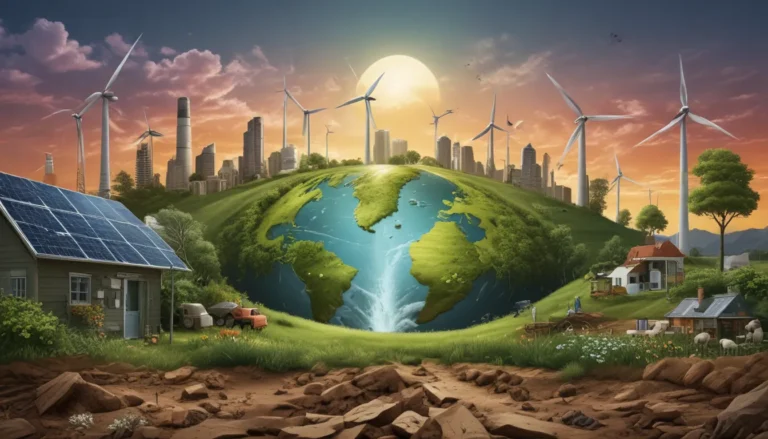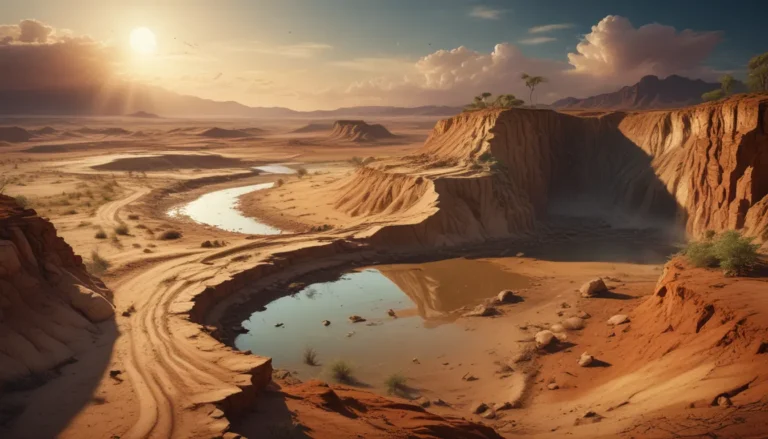A Note About Images: The images used in our articles are for illustration purposes only and may not exactly match the content. They are meant to engage readers, but the text should be relied upon for accurate information.
Levees have been a crucial part of human civilization for centuries, playing a vital role in managing water flow, preventing floods, and safeguarding communities and valuable assets. These remarkable structures have evolved over time, becoming more sophisticated and effective in their design and functionality. Beyond their practical purpose, levees also hold fascinating stories and incredible facts that highlight their significance in geography, engineering, and history.
Understanding the Legacy of Levees
- Evolution Over Time: Dating back to ancient times, civilizations have constructed levees to protect their communities from flooding and manage water resources.
- Origin of the Term: The word “levee” originates from the French word “lever,” meaning “to raise,” reflecting the purpose of these structures in raising land to prevent flooding.
- Global Impact: The Netherlands boasts the longest levee in the world, the Afsluitdijk, spanning approximately 20 miles and showcasing the country’s extensive levee system.
- Variety of Materials: Levees can be constructed from various materials, including compacted earth, concrete, and steel sheet piles, showcasing the versatility in their design and construction.
The Role of Levees in Environmental Conservation
- Protecting Agricultural Land: Levees play a crucial role in safeguarding valuable agricultural land by preventing flooding and ensuring the continuity of food production and local economies.
- Promoting Recreation: Many levees incorporate recreational areas such as parks and trails, providing communities with green spaces and opportunities for outdoor activities.
- Supporting Wildlife Habitats: Levees create unique ecosystems that support a diverse range of wildlife, including birds, amphibians, and aquatic species, contributing to biodiversity conservation efforts.
- Addressing Subsidence: In regions with underlying soft soils, levees can help counteract land subsidence by exerting pressure against floodwaters, minimizing the effects of sinking land.
Ensuring the Reliability and Effectiveness of Levees
- Historical Significance: The Great Mississippi Flood of 1927 prompted significant advancements in levee construction and maintenance, leading to enhanced flood protection measures.
- Adaptability Over Time: Due to changing water flow patterns, erosion, and evolving infrastructure needs, levees may require modifications and upgrades to maintain their effectiveness.
- Critical Considerations: The height of a levee is a crucial factor in flood protection, with the crest elevation determined based on historical flood levels and projected future inundation scenarios.
- Maintenance Requirements: Regular inspection and maintenance are essential to ensure the reliability of levees, including vegetation clearance and erosion monitoring to address potential vulnerabilities.
Addressing Challenges and Future Development in Levee Construction
- Incorporating Floodgates: Levees can be designed to include floodgates, offering additional control over water flow and enabling strategic management during flooding events.
- Construction Complexities: Building and maintaining levees involve significant engineering considerations and financial investments due to the scale and complexity of these projects.
- Environmental Impacts: Poorly designed or maintained levees can disrupt natural river processes, alter ecosystems, and degrade habitats for wildlife, emphasizing the importance of careful planning and mitigation strategies.
- Continual Improvement: By enhancing levee systems and expanding our knowledge through ongoing research and innovation, we strive to create a safer and more resilient future in the face of climate change and rising sea levels.
Conclusion: Embracing the Legacy and Future of Levees
In conclusion, levees stand as remarkable engineering structures that have played a pivotal role in protecting communities from the devastating impacts of flooding throughout history. From ancient civilizations to modern-day advancements, these structures exemplify human ingenuity in balancing nature’s forces with innovative solutions. By delving into the fascinating facts and stories surrounding levees, we gain a deeper appreciation for the intricate systems behind their construction and operation. As we continue to confront the challenges of a changing climate, the importance of levees in safeguarding lives and landscapes remains paramount. Through collaboration, innovation, and a commitment to excellence, we can build a more resilient future for generations to come.
FAQs: Unveiling the Truth About Levees
-
What is a levee?
A levee is a man-made embankment or barrier constructed along rivers, lakes, or coastlines to prevent flooding by containing or diverting water flow. -
How are levees built?
Levees are typically constructed using a combination of soil, rocks, concrete, and geotextile materials to create a stable structure capable of withstanding hydraulic pressure from water. -
What are the benefits of levees?
Levees provide protection against flooding, safeguarding lives, properties, and essential infrastructure while also enabling agricultural irrigation and recreational opportunities. -
Are levees foolproof?
While designed to reduce flood risk, levees are not infallible; extreme weather events or inadequate maintenance can lead to failures, resulting in potential loss of life and property damage. -
Can levees be environmentally damaging?
Poorly designed or maintained levees can disrupt natural river processes, alter ecosystems, and degrade wildlife habitats, highlighting the importance of careful planning and mitigation measures. -
How do levees differ from dams?
Levees focus on flood protection and water management, whereas dams store and control water for purposes such as hydroelectric power generation and irrigation. -
Are all levees built the same way?
Levee designs vary based on location, water conditions, and engineering requirements, with factors like soil type, topography, and flood levels influencing construction methods. -
Can levees be repaired or upgraded?
Yes, levees can be repaired or upgraded to enhance performance and adapt to changing conditions, requiring regular inspections, maintenance, and improvements for long-term effectiveness.
Elevate Your Understanding: Exploring the World of Levees With Confidence
Our journey through the fascinating world of levees has shed light on the incredible legacy and significance of these structures in protecting communities and landscapes from the perils of flooding. By embracing the knowledge and insights shared in this exploration, you can deepen your understanding of the essential role that levees play in our environment and society. As we continue to face new challenges and opportunities in the realm of water management and disaster resilience, your newfound expertise in levee facts will empower you to navigate this critical landscape with confidence and clarity. Join us in celebrating the remarkable world of levees and their enduring impact on our world.






